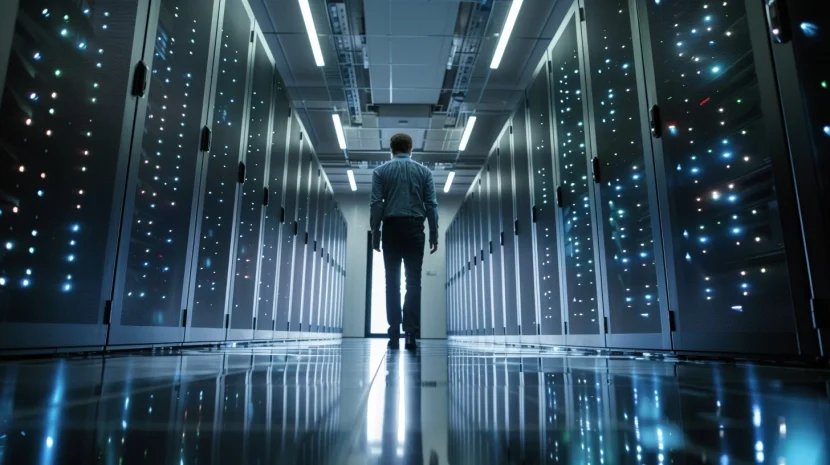Understanding the Differences and Benefits
As technology evolves, churches face the crucial decision of whether to utilize traditional servers or switch over to cloud computing. This document delves into the key differences, advantages, and challenges of both options, providing a comprehensive guide to help make informed decisions.
Definition and Basics
Traditional Servers
Traditional servers are physical machines that store and manage data, applications, and resources within an organization. These servers are typically located on-site, in data centers, or server rooms. They require significant investment in hardware, maintenance, and infrastructure.
Cloud Computing
Cloud computing, on the other hand, refers to the delivery of computing services—such as servers, storage, databases, networking, software, and analytics—over the internet (the cloud). Cloud services are provided by third-party providers like Amazon Web Services (AWS), Microsoft Azure, and Google Cloud Platform, who manage the infrastructure and resources.
Key Differences
Infrastructure and Maintenance
Servers: Churches using traditional servers must invest in physical hardware, power supplies, and network configurations. They also need a dedicated IT team or partner to handle maintenance, updates, and troubleshooting.
Cloud Computing: With cloud computing, the infrastructure is managed by the service provider. This means churches can focus more on their core business activities without worrying about hardware maintenance, updates, or resource management.
Scalability
Servers: Scaling up or down with traditional servers can be cumbersome and expensive. It involves purchasing additional hardware and configuring it to meet the growing needs.
Cloud Computing: Cloud services offer unmatched scalability. Churches can easily scale their resources up or down based on demand, allowing them to pay only for what they use.
Cost
Servers: The initial investment in traditional servers can be substantial. Additionally, ongoing maintenance, upgrades, and power consumption add to the total cost of ownership.
Cloud Computing: Cloud computing typically operates on a pay-as-you-go model. Depending on your needs, this could be cheaper or more expensive. There are no upfront costs for hardware, and churches can avoid the expenses associated with maintenance and updates.
Accessibility
Servers: Access to data and applications hosted on traditional servers is generally limited to the local network. Remote access requires additional configurations and may pose security challenges.
Cloud Computing: Cloud services offer seamless access from anywhere with an internet connection. This is particularly advantageous when your people want or need to work remotely.
Security
Servers: Churches using traditional servers have complete control over their security protocols. However, they need to invest in robust security measures to protect against cyber threats.
Cloud Computing: Cloud service providers implement advanced security measures and compliance protocols to safeguard data. However, churches must still ensure they follow best practices for cloud security, including data encryption and access controls.
Advantages and Challenges
Advantages of Traditional Servers
- Control: Complete control over hardware, software, and security configurations.
- Customization: Tailored solutions to meet specific business needs and regulatory requirements.
Challenges of Traditional Servers
- Cost: High initial investment and ongoing maintenance expenses.
- Scalability: Limited flexibility in scaling resources quickly.
- Maintenance: Requires a dedicated IT team or partner for management and troubleshooting.
Advantages of Cloud Computing
- Scalability: Easily scalable resources to match demand.
- Cost-Effective: Pay-as-you-go pricing model reduces upfront costs.
- Accessibility: Remote access from anywhere with an internet connection.
- Maintenance-Free: Service providers handle infrastructure and updates.
Challenges of Cloud Computing
- Security: Potential vulnerabilities if best practices are not followed.
- Dependency: Reliance on internet connectivity and third-party providers.
- Compliance: Ensuring compliance with industry regulations and data privacy laws.
Conclusion
The choice between traditional servers and cloud computing ultimately depends on the specific needs, preferences, and resources of your organization. Traditional servers offer greater control and customization, whereas cloud computing provides scalability, cost-efficiency, and accessibility. By understanding the key differences and evaluating the advantages and challenges of both options, churches can make well-informed decisions that align with their long-term goals.
Microsoft and Google both offer cloud storage with their Office Application subscriptions. (Office 365 and Google Workspace) If all the server does is store your documents, spreadsheets, etc., then moving to cloud-based storage is inexpensive and easy.
If your server hosts shared applications such as QuickBooks or any type of database system, going cloud-based may be a little more difficult. However, many software developers are also providing cloud-based versions of their applications, so the transition may be easier.


